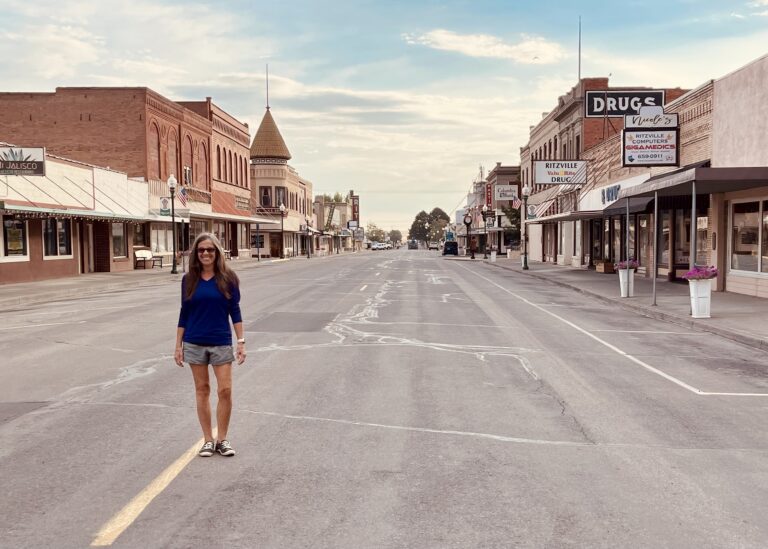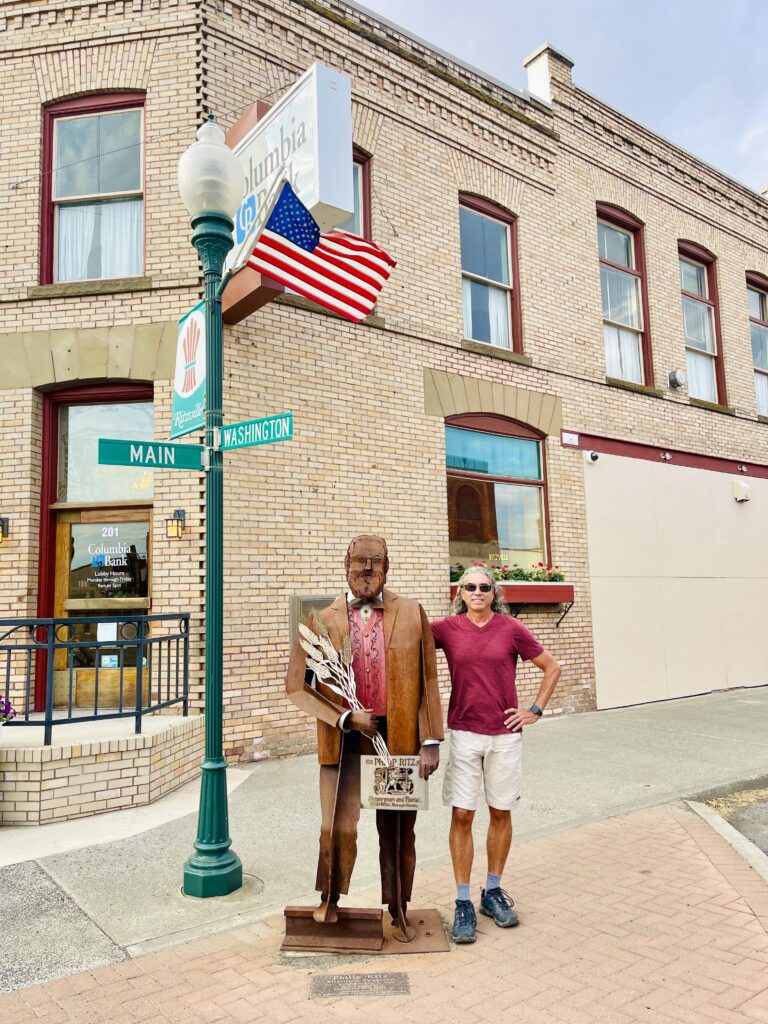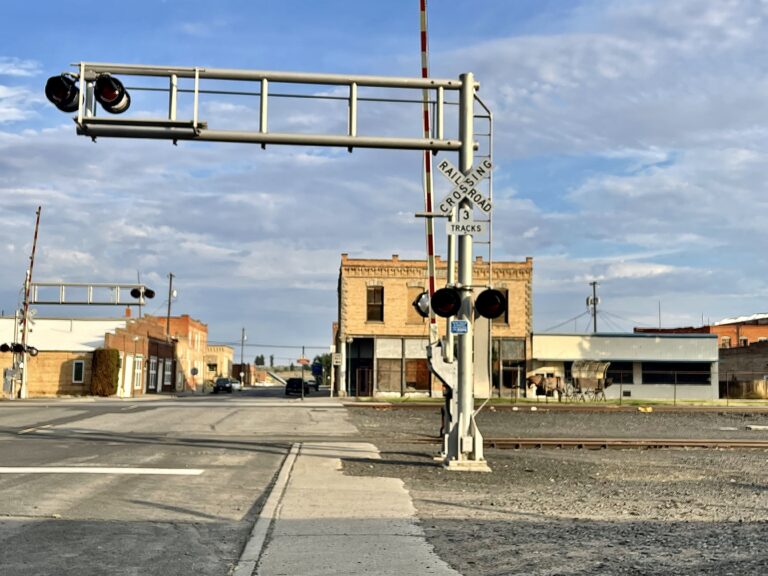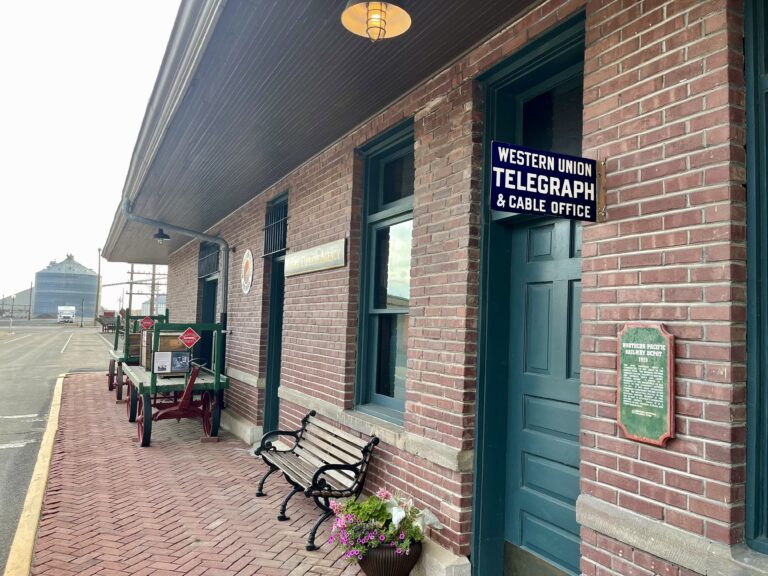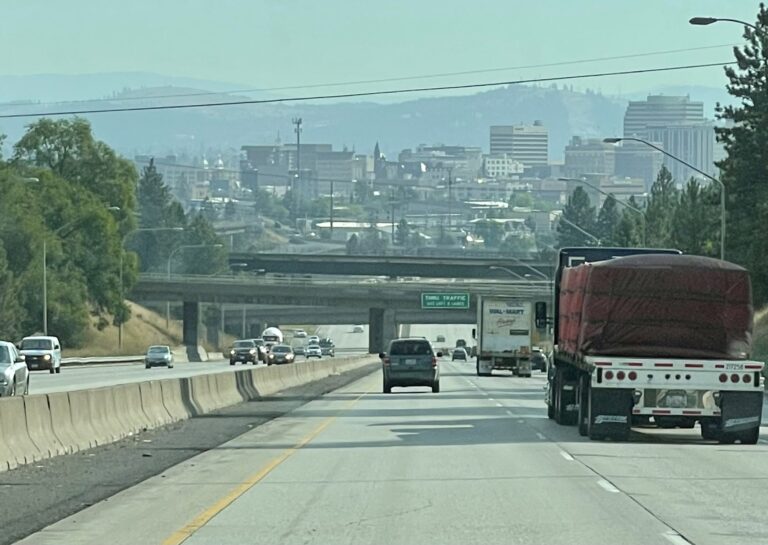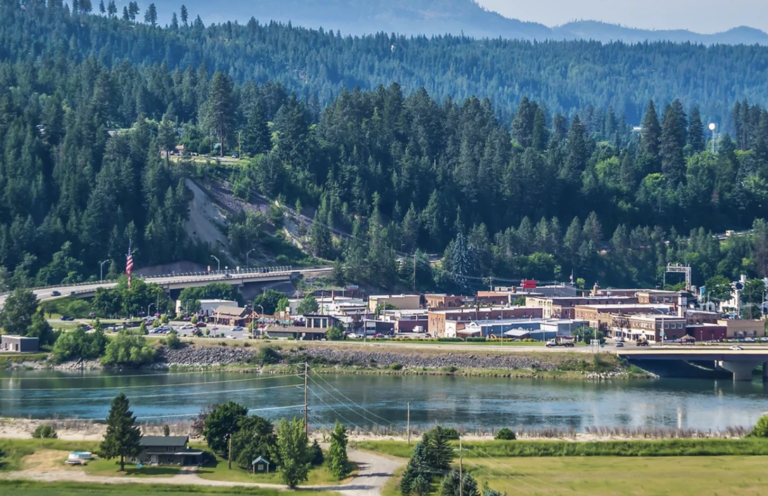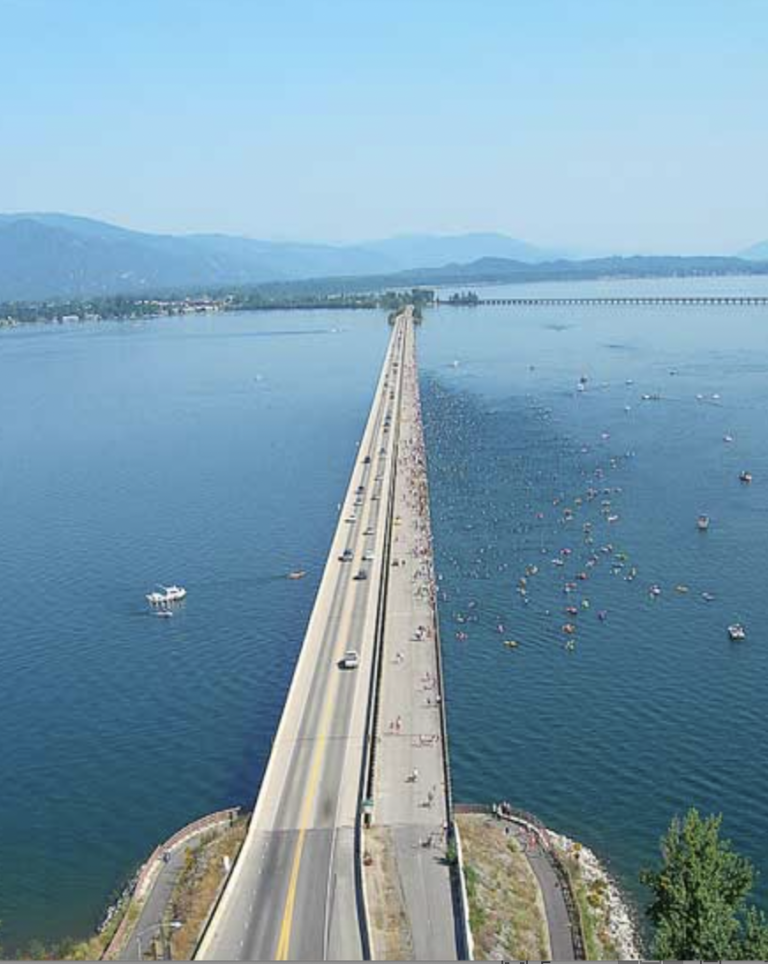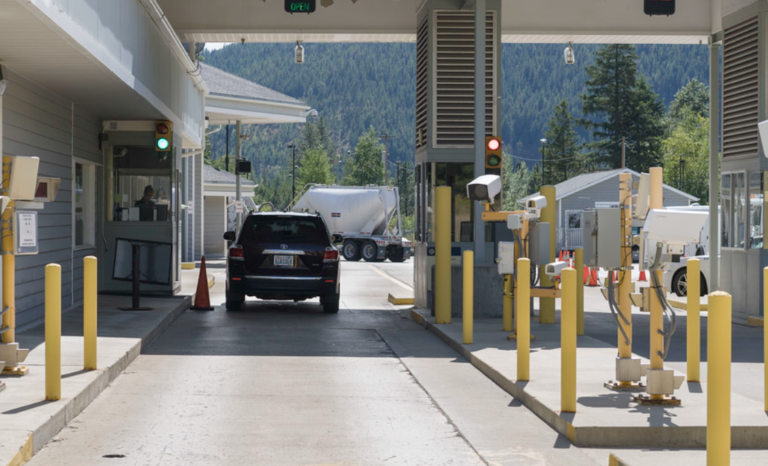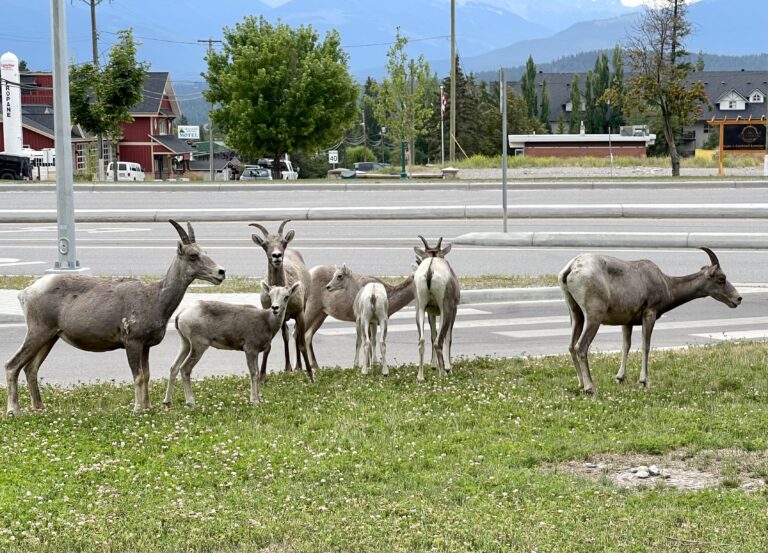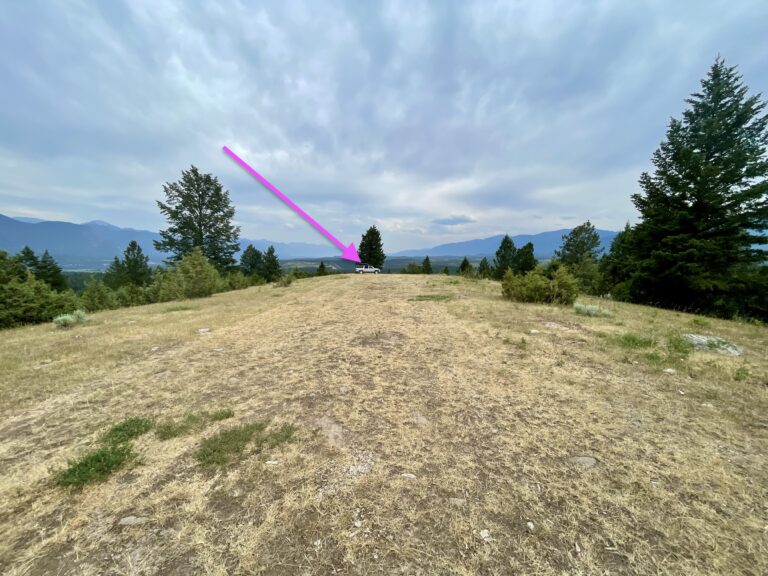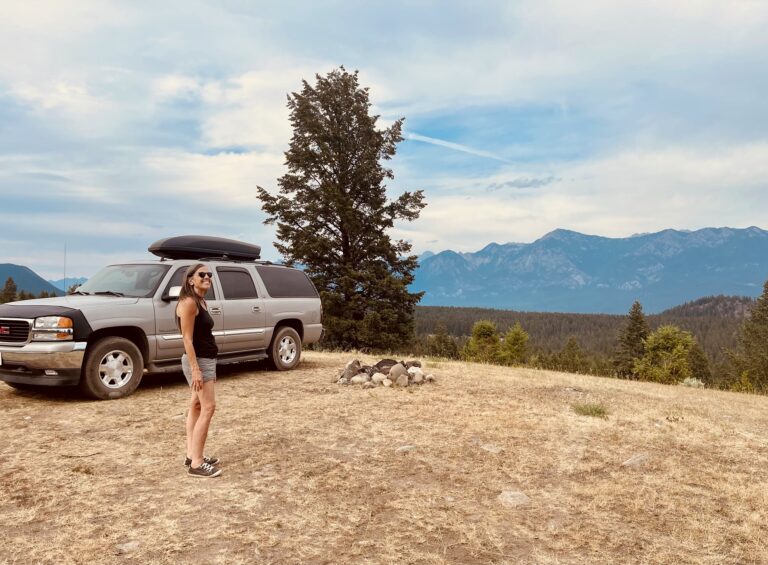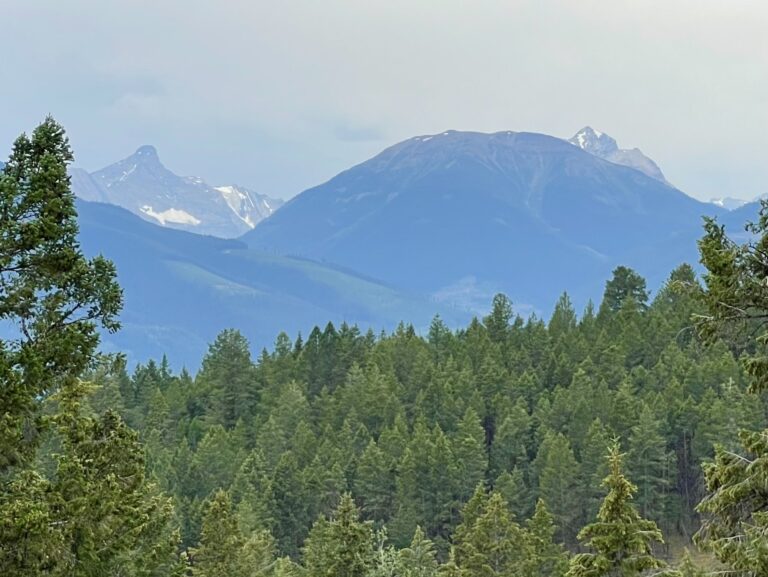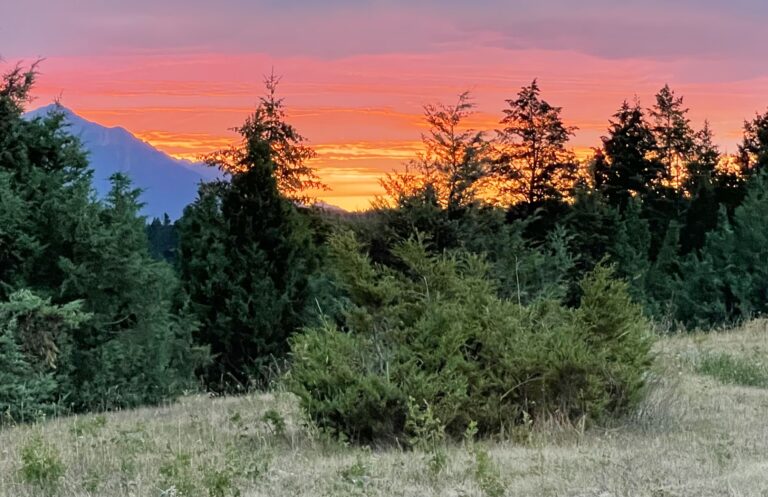August 9, 2022
We woke up around 1956 and after a shower in a pink tub that countless other travelers had used, we set out for a walk around the small town of Ritzville in the morning light. It didn’t take long. Two blocks later found us downtown. Susan stepped into the middle of empty Main Street at 7:30 am and posed while I took a picture.
The coffee shop listed on Google was long gone. There were several stores, still closed, and a few more empty storefronts in the three-block area. It felt like someone had hit an air-raid siren five minutes before — the roads were devoid of cars and there was no one, anywhere.
We passed at least a dozen churches and after doing some quick math with the city’s population of 1,600, we had to assume some residents were poly-religious, flitting amongst several churches. Nearby were huge grain silos and several railroad tracks. The town had been built when the railroad came through and all night we’d heard trains.
As we walked back we stopped at a rail crossing when we heard the train blasting its horn as it barreled through town at 60 mph, 50 feet from us. Also at the crossing was the town’s rush hour, now backed up; four pickups waited while the train went by, then disappeared.
Quiet returned as we wandered by the railroad museum. So many small towns have these. The towns erect museums to give thanks to the railroads that made them prosper, but as Ritzville learned, it works only when the trains and people make a stop in the town.
Back at the motel, we dropped the metal key in a slot and headed out of town.
We talked about how much we hope small towns like this can survive. This is rural America and we think we need places where old men in overalls talk about the crops and the weather and kids play in the parks after school. Maybe, we hoped, Ritzville would become an art colony or a brewpub destination and reinvent itself before it’s too late.
Just outside of town, we found one of the reasons for Ritzville’s hard times. The new “railroad,” Interstate 90, had an exit half a mile from downtown, and Days Inn, Starbucks, McDonald’s and various truck stops sprouted alongside. No one need go into town anymore, everything could be done in 10 minutes here.
Central Washington is pretty. Gently rolling hills of wheat eventually gave way to larger hills and more trees and soon Spokane hove into view. It’s a really nice city with 220,000 people and it feels like the right sized town. We kept heading northeast through the evergreens of Washington, crossed the long Sandpoint Bridge over lovely Lake Pend Oreille in Idaho, and eventually made a brief stop in the picturesque small town of Bonner’s Ferry, Idaho along the Kootenay River.
Within a few hours, we’d arrived at the Canadian border. We’d been told there could be long lines and were prepared to wait. We’d filled out the Canadian customs and immigration ArriveCAN app and hoped we’d get through smoothly. At least we spoke the same language, unlike our last international trip.
At the crossing there was just a single car in front of us and within seven minutes of reaching the border crossing we were in Canada. We recalibrated our brains to metric as we zoomed along at 100 kph.
A few hours later, we reached Radium Hot Springs, BC and stopped for maps of Banff and Kootenay Provincial Parks. On the way out, we saw a small herd of mountain goats causally eating grass along the edge of the road at a nearby traffic circle. Then we headed up a forest road into the nearby mountains to find a place to camp.
After exploring for maybe 45 minutes up a gravel road, we found what we were looking for. A very steep double-track trail up a dirt hill led to a half-acre clearing with 360-degree views of mountains. After walking the hill to check out the condition of the trail, we engaged 4wd and mountain-goated up the hill to one of our prettiest campsites yet.
We explored the area in 99-degree heat that wasn’t so bad when the clouds came and the wind blew. After dinner, we gazed at some snow-covered peaks in the distance while the pleasant wind cooled us a little.
The sun eventually began its descent over the mountains to our west. This far north it got dark nearly an hour later than home. As we prepped for bed, I wondered if we could get down a steep muddy hill if it rained. If not, we’d be staying here for a few days.

